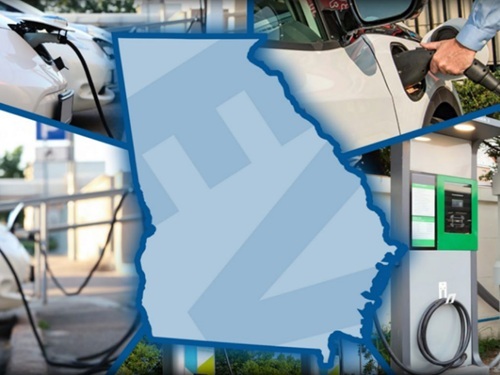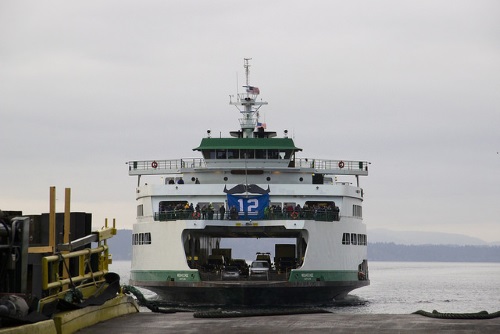A broad 30-year plan to boost Washington State’s maritime industry while also reducing its greenhouse gas emissions also aims to provide more support for its ferry system, which is operated by the Washington State Department of Transportation, carries 24.5 million people per year, and is considered one of the largest such ferry systems in the nation.
[Above photo by WSDOT]
“The Washington Maritime Blue strategy aligns with many of our state’s current initiatives such as our Clean Energy future plans, Career Connect Washington, the Southern Resident Orca Task Force, as well as the Washington State Ferry System’s long-range plan,” explained Gov. Jay Inslee (D) in a Jan. 8 blog post.

“Maritime activity has long been a pillar of our state’s economy, and we are uniquely positioned to lead the country in maritime innovation,” Gov. Inslee (at far right in photo at right) noted. “This initiative allows us to show the nation that we can adopt new management practices and clean technologies while creating living-wage jobs for Washingtonians.”
Those themes dovetail with the newly-released 2040 Long Range Plan that the Washington State Ferries system – a division of WSDOT – submitted to the state legislature on Jan. 3.
“This Long Range Plan provides a blueprint to guide WSF’s investments and meet our customers’ service expectations,” Assistant Secretary Amy Scarton said in a statement. “We need to invest immediately in building new ferries, developing our workforce and upgrading technology and terminals to provide reliable, sustainable and resilient ferry service through 2040 and beyond.”
She noted that the ferry fleet’s 23 vessels are scheduled to be retired by 2040, meaning the ferry system needs 16 new vessels in the next 20 years – including 13 ferries to replace vessels due for retirement and three additional vessels to fill in when other ferries are out for maintenance and for meeting increased growth.
 States
States
Podcast: Flashing LED Lights Can Boost Roadway Safety
December 5, 2025 States
States

